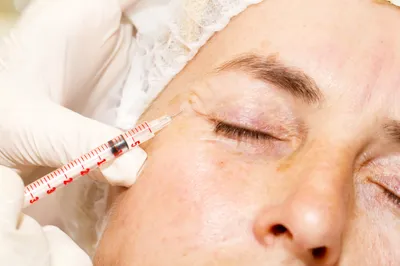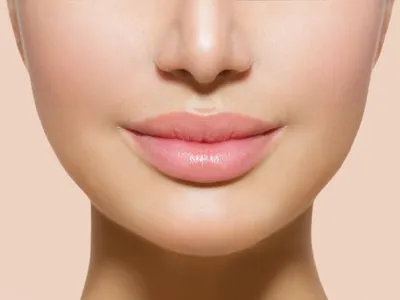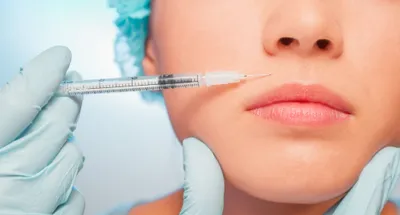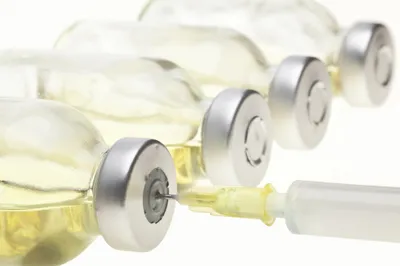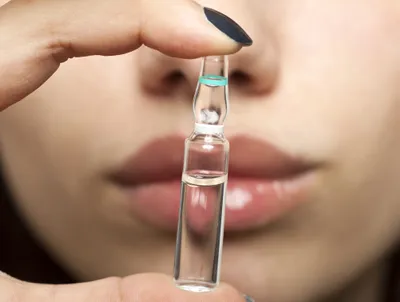So what is up with all of these fillers we keep hearing about in the media? While aging celebrities (i.e., Lisa Rinna and Vanessa Williams) swear by them for smoothing fine lines and banishing wrinkles, younger starlets (i.e., Lindsay Lohan and Kylie Jenner) certainly look game, but adamantly deny using injectables.
Fillers are so popular with the star set because unlike topical creams and serums, injetables tackle the affects of aging (fat loss) deep underneath the skin. However, plastic surgeons at NYU Langone Medical Center, warn that it’s important to know not only what’s in the six most popular fillers, but also to select the right one for your specific cosmetic aging concerns…
[*By no means are we recommending or promoting the use of fillers or cosmetic surgery, but we do believe that knowledge is a powerful tool when it comes to making any health or beauty decision.]
1. Hydroxylapatite
This mineral-simulating substance mimics a gel-like substance that naturally exists and is produced inside human human bones, known as collagen. Hydroxylapatite is injected specifically to target crow’s feet, smile lines, and other mild-to-severe aging by filling in wrinkles.
This filler is usually marketed under the name Radinesse, a filler approved by the U.S. Food and Drug Administration (FDA) in 2006. Injections of Radinesse typically last about 12-months before you need follow up injections.
2. Fat Fillers
Many of us joke that it would be ideal to take fat out of one area of the body (i.e., the buttocks or tummy) and inject it into another area (i.e., the face or lips). Well, it turns out that doctors can do just that—by performing liposuction to remove pure fat from one part of the body and inject it permanently into another area that requires filling.
Although this filler is permanent and immediate in nature—meaning you’ll see results almost right away—it requires some serious recovery time. Fat injections and liposuction can result in some pretty nasty swelling and bruising, both from where fat was removed at the area of injection. Also, keep in mind that the injected fat can expand in it’s filler spot should you gain weight.
3. Polymethylmethacrylate
Polymethylmethacrylate is sure a mouthful, but you can simply refer to it as PMMA. Although PMMA is a permanent filler, this man-made substance is tiny beads of plastic preserved in gel injections and collagen.
If the idea of injecting shatter-resistant plastic beads into your body isn’t enough to turn you off, keep in mind that PMMA injections take time to display results. This means that even though the injections are permanent in nature, it may take many shots to gradually bulk up the filler to your desired look.
4. Collagen Fillers
Collagen is perhaps one of the best known fillers for a few reasons. Firstly, collagen injectables were the very first available injectable on the beauty market. Secondly, collagen fillers are fashioned from the actual protein that supports your body’s natural skin-plumping structure.
Today, despite their more natural appeal, collagen injections are often overlooked by those seeking smoother, fuller skin due to the fact that collagen loses it’s bulking affects faster than other fillers. Collagen injections are usually required every 3- to 4-months to keep up a full appearance.
5. Poly-L-lactic Acid
The FDA approved the use of the filler Poly-L-lactic acid under the brand Sculptra, in 2009. Another man-made injectable that triggers collagen production, patients ask for Sculptra when they want to replace age-related fat loss in the face.
However, as easy as that sounds, Sculptra requires 2 injections within a 6-month period to get started and further injections ever 18 to 24-months after that. You’re lucky if you witness any plumping for a few months. In fact, this painful injectable can take up to 4-months to show results, not to mention the fact that it’s renowned as one of the most painful injectables on the market.
6. Hyaluronic Acid
If you’re not sure about your filling decision, it’s always good to have the option of a return policy with hyaluronic acid (or HA). No, you can’t get your money back, but if you get an HA injection and decide the look is just not for you—your doctor can reverse the plumping affects by removing the filler.
It may sound like magic, however, HA is created from a natural body substance that bulks up the skin when it’s mixed with water. If you’re unsatisfied, your doctor will simply inject an enzyme (called hyaluronidase) to dissolve the bulking effects of HA. The other perk of HA is that it comes with a built-in pain killer. HA is spiked with lidocaine, a common anesthetic.

